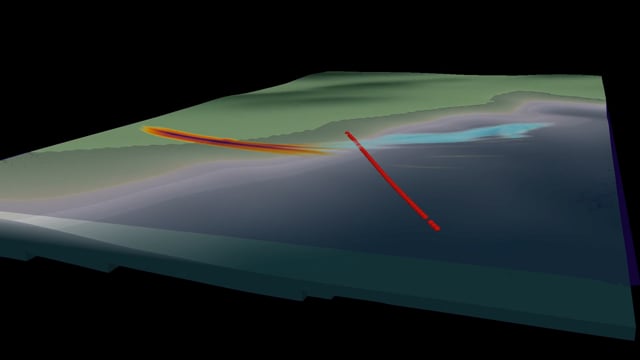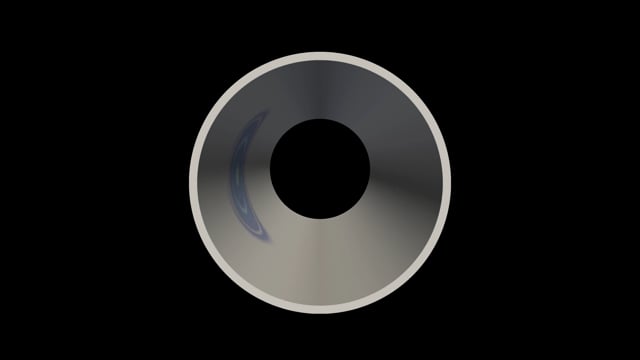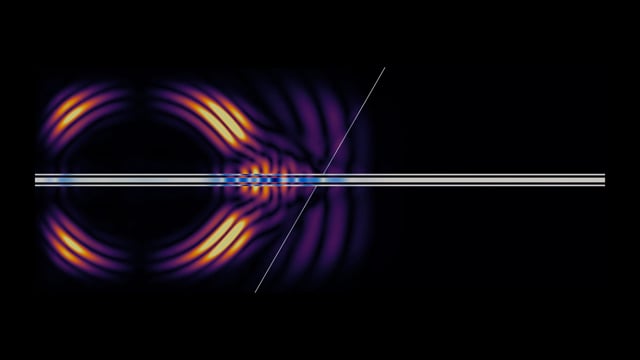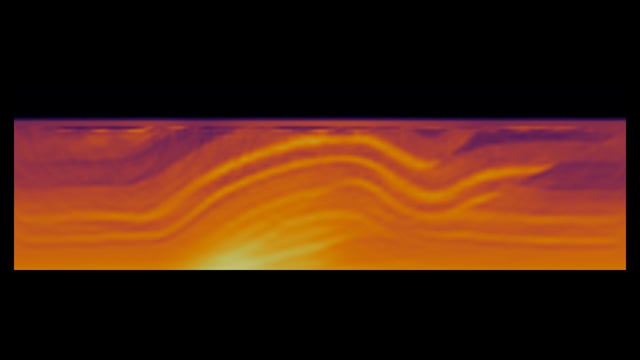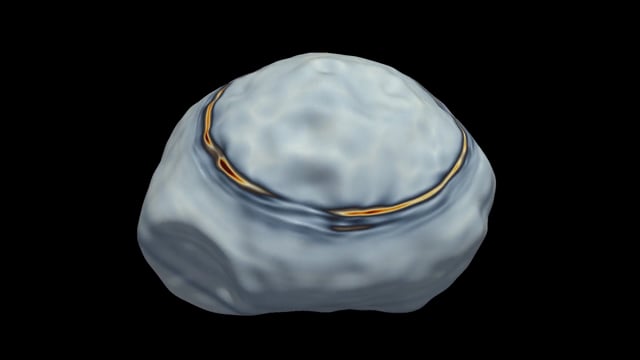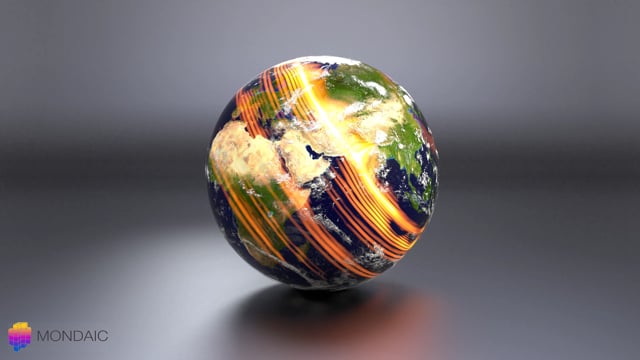Use cases
This page demonstrates a few potential use cases of Salvus, our software suite and end-to-end solution for all waveform modeling and inversion needs. Every step for these use cases was performed fully with Salvus; this includes problem setup, meshing, job submissions, waveform simulations, data management and numerical optimization routines.If you want to learn more, head over to our documentation for more technical explanations, in-depth tutorials and API descriptions.
3D Simulations
Salvus excels in the large-scale computation of fully 3-D wavefields in realistic and complicated environments. In this use case, Salvus was used to investigate the character of vibrational strain signals recorded along an ocean bottom fiber-optic cable. High resolution surface and seabed topography, along with the accurate coupling of both viscoelastic and acoustic wavefields, are automatically included using our simple Python-based interface. Simulations such as these help researchers investigate new and exciting applications of distributed acoustic sensing (DAS).
The following illustration highlights a few of the complexities Salvus handles - click on it to see a video of these waves propagating. All this readily scales from running on laptops, to GPU clusters all the way to big machines with thousands of cores. The simulation rendered below took less than a few minutes to run on a single GPU.
Nondestructive Evaluation
Salvus can efficiently model ultrasound propagation in materials relevant for structural health monitoring. With the included Python-based toolbox for digitial twin creation, this opens up the application wavefield-based optimal experimental design and full-waveform inversion to applications in nondestructive evaluation. Below, we see a fully 3-D elastic ultrasound wavefield propagating through reinforced concrete with rebar. Simulations like this one can be run in a matter of seconds on a single consumer-grade workstation.
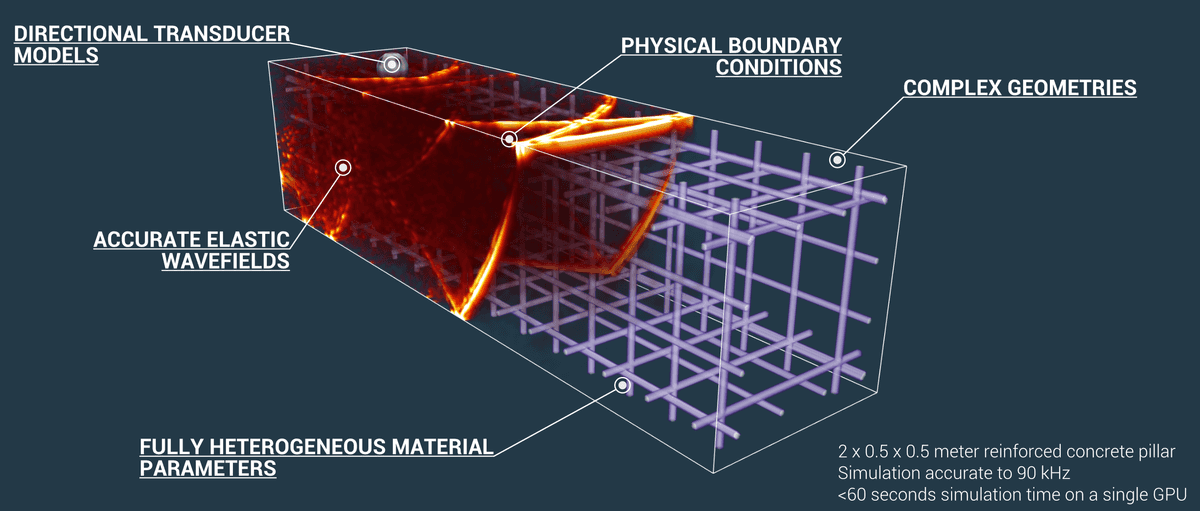
Pipeline Monitoring
Salvus efficiently computes wavefields propagating in engineering components with complex geometries. In this application, we see the scattered wavefield emitted by an ultrasound transducer array and interacting with a critical thickness variation of a pipeline. By examining the character of this scattered wavefield, and combining it with our full-waveform inversion functionality, Salvus is opening up exciting new paths towards corrosion mapping and pipeline monitoring.
Borehole Acoustics
Salvus simulates multiple wave propagation physics, including coupled acoustic / viscoelastic waves propagating through air or water-filled boreholes in 2- and 3-D. These simulations provide a quantitative evaluation of subsurface materials and structures, and assist in characterizing the imprint of thin fractures.
Full-Waveform Inversion
Salvus provides a robust and extensible interface to a purpose-built nonlinear optimization library for full-waveform inversion. By leveraging adjoint functionality, checkpointing and GPU accelerators, Salvus efficiently computes sensitivities with respect to a variety of model parameters. The inversion framework provides powerful workflows, data management and remote job execution while offering the flexibility to interface with custom misfit and processing functions. Our portfolio of use cases includes subsurface exploration, nuclear explosion monitoring, continental-scale seismology, nondestructive testing, and medical imaging.
Extra-planetary Imaging
The geometrical flexibility of Salvus brings seismic imaging techniques to planets, asteroids and other extraterrestrial bodies. Accurate modeling of surface topography and solid/fluid coupling in the interior are crucial to understand the seismicity of these objects. For instance, Salvus is used by NASA’s Insight mission to run large-scale simulations for various scenarios of the interior structure of Mars.
Seismology
Seismic waves can be used to study many aspects of the Earth's crust, mantle, and core. Salvus can mesh, simulate, and invert on all scales ranging from small scale basin level studies to the full globe. This naturally includes complexities like oceans, as well as internal and external topographies.
 Mondaic
Mondaic